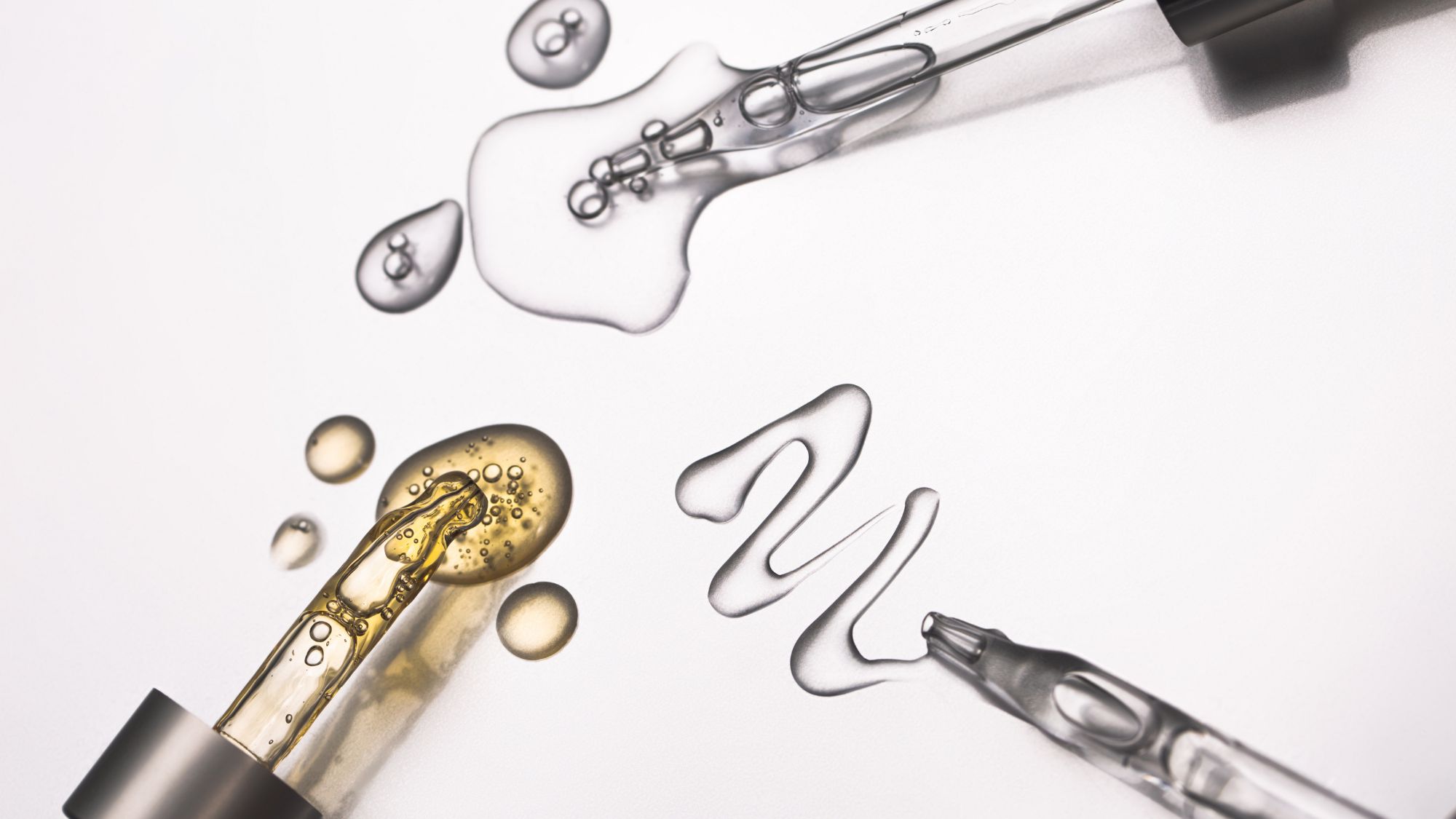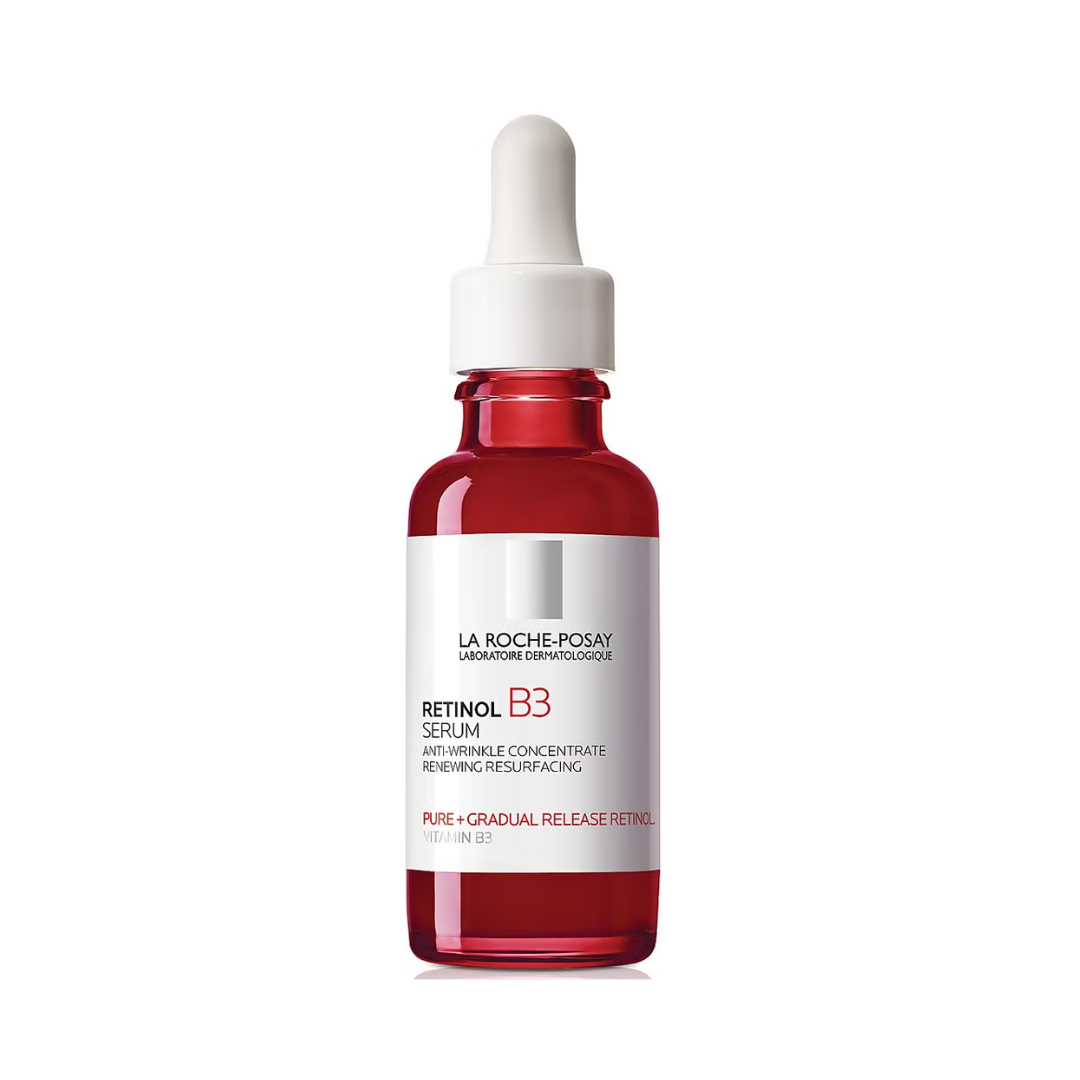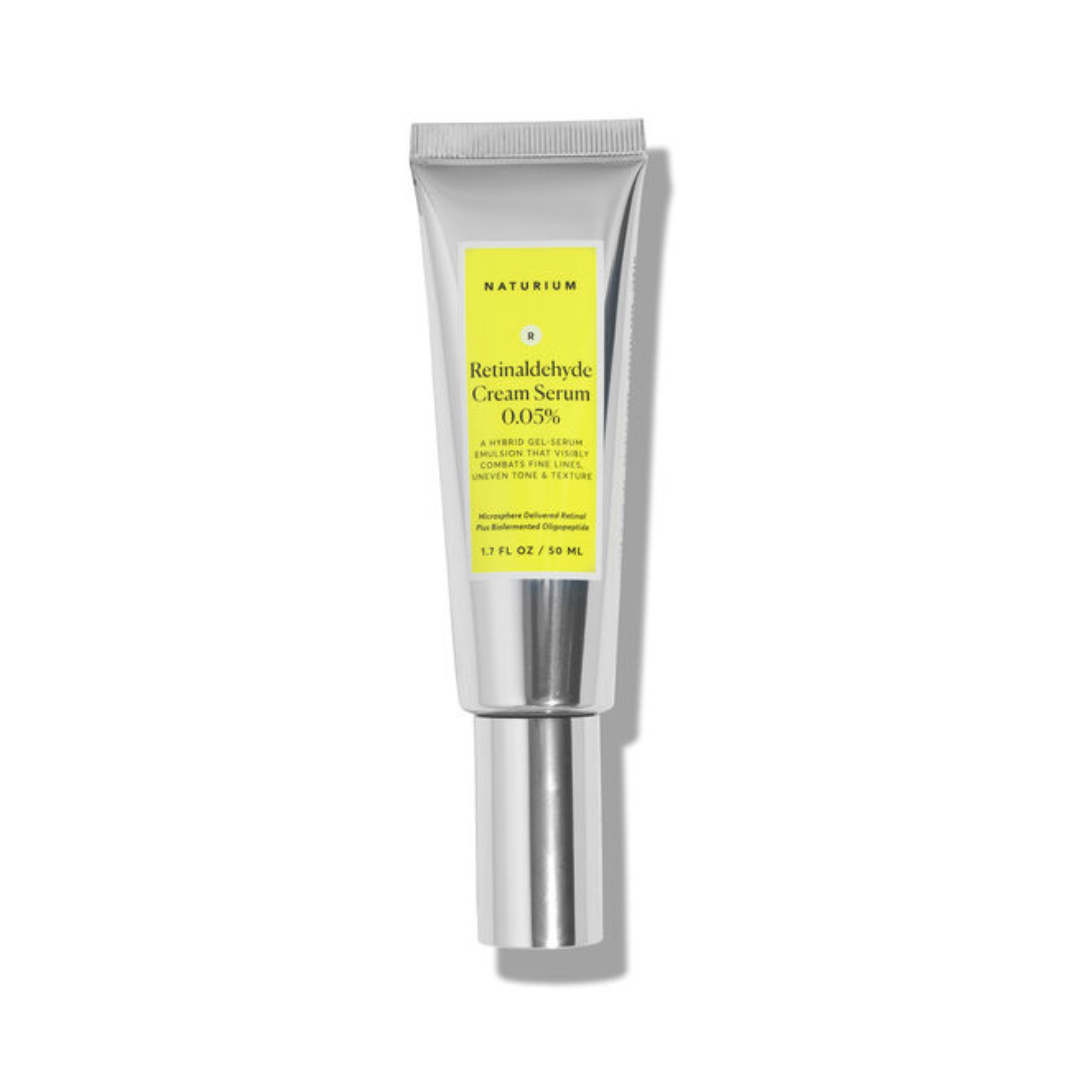Do you know the difference between retinol and retinal? Retinoids are confusing - two skincare experts demystify this hero ingredient
Consider this a vitamin A cheat sheet


If you’re at all interested in skincare, I’d venture you have at least some awareness of the benefits of retinoids. Nearly every skincare expert I speak to recommends using one of the best retinol serums as part of a hardworking skincare routine. But as a skincare category, this encompasses several different types of vitamin A product which are getting more attention in light of the new EU retinol regulation.
The retinoid-related glossary
Vitamin A: The umbrella term that includes all retinoids.
Retinoids: The term for all compounds that are derivatives of vitamin A.
Retinoic acid: The form of vitamin A that your skin actually uses. Think of this as the final destination on a skincare product’s journey after being applied to your skin.
Retinisation: Any dryness and sensitivity your skin experiences when adjusting to the introduction of a retinoid to your skincare routine.
Retinol is famous for its ability to target visible signs of ageing, such as fine lines and wrinkles, and help acne-prone skin. Beyond retinol serums, other derivatives used in skincare include retinaldehyde (retinal) and esters like retinyl palmitate. But even if you understand the benefits of using a retinoid, you may not be as confident in choosing the type that will be most suited to and effective for your skin – which is why I asked two experts to break down the key retinoids used in skincare and, crucially, how they differ.
Without getting too scientific, I’ve compiled this overview of what each one does to help you choose the right one for your skin. It’s by no means an exhaustive guide (this is an online article not a dossier, after all), but it should give you a good starting point for understanding the most widely-available retinoids.
Let’s get stuck in…
Why are conversion steps important aspect of retinoids?
Before we go into some of the key players on the retinoid scene, one thing that sets them apart is the number of "steps" they have to undergo once applied topically to your skin to convert into retinoic acid, which is the form it needs to be in to actually get results.
“A retinoid that requires fewer conversion steps to become retinoic acid generally provides faster and more potent results but can also cause more irritation,” explains Dr Derrick Phillips, consultant dermatologist at OneWelbeck. “This is where formulation is extremely important. However, retinoids that need more conversion steps are typically gentler on the skin, making them more suitable for those with sensitive skin despite potentially slower results.”
A post shared by INCIDecoder (@incidecodercom)
A photo posted by on
A guide to the key retinoids, AKA vitamin A products
1. Retinol esters
“Retinol esters are best for beginners and those with sensitive skin for example,” says Dr Phillips. “Retinyl palmitate is very gentle with minimal irritation. They convert slowly to retinoic acid, offering subtle improvements in skin texture and tone over time.”
Marie Claire Newsletter
Celebrity news, beauty, fashion advice, and fascinating features, delivered straight to your inbox!
Though the results of a retinyl ester won’t be as dramatic or quickly achieved as a more potent retinoid but, as Dr Phillips notes, the plus side is that they tend to better suit sensitive complexions.
Number of conversion steps: 3
2. Retinol
Though retinoids have long been used in skincare, this is arguably the form of vitamin A that really put them on the map, mass market speaking. “Retinol is suitable for intermediate users aiming to improve fine lines and overall skin texture, as it offers a balance between efficacy and tolerability,” says Dr Phillips. “It provides noticeable improvements in smoothness and reduction of fine lines, with mild to moderate potential for irritation."
Number of conversion steps: 2
3. Retinal
Retinal – short for retinaldehyde – is a growing presence in the skincare market. Going back to those all-important conversion steps, retinol first converts to retinal before retinoic acid. Therefore, retinal is one step along the chain, if you like. “Retinal is ideal for those seeking faster results than retinol as it converts more quickly to retinoic acid,” confirms Dr Phillips. “It offers improved skin texture and reduced pigmentation within a shorter period, but may cause more irritation than retinol.”
Daniel Isaacs, chief product officer at Medik8, notes that it is 11 times faster than standard retinol. “It enhances skin cell turnover and collagen synthesis and it is the only antibacterial form of vitamin A, which means it is great for blemish-prone skin,” he adds.
Number of conversion steps: 1
4. Hydroxypinacolone retinoate
Hydroxypinacolonate retinoate, also commonly known as granactive retinoid, works differently to the other retinoids we've covered so far. An ester of retinoic acid, it's thought to bind to the retinoic receptors in our skin without conversion. Isaacs notes that there is currently less data behind it than with other retinoids, but that is still a "promising molecule".
"[It] provides potent retinoid action without causing extensive irritation, making it suitable for people with sensitive skin," Dr Phillips adds. "You can expect visible improvements in fine lines and pigmentation with low irritation risk.”
Number of conversion steps: 0
5. Tretinoin
You won’t find a skincare product on a department store counter or high street shelf, because this is a prescription-only product. Tretinoin is very powerful because it is retinoic acid. “[It] is a prescription medication and should only be used under the supervision of your doctor or a dermatologist,” says Dr Phillips. “It is the most potent retinoid and is suitable for those with acne, or significant photoageing.”
Because it’s so potent, there is a high likelihood of sensitivity and peeling, particularly when you first start using it. “It delivers a reduction in pimples, and marked improvements in wrinkles and skin texture within 12 weeks, however, there is a high potential for irritation and it should be gradually introduced to the skincare routine,” Dr Phillips confirms.
Number of conversion steps: 0 (already retinoic acid)
Will a stronger retinoid get me better results?
It’s important to remember that retinoid use requires starting slowly and building up to higher concentrations—don’t be tempted to start with the highest concentration product from a particular range if you are very new to vitamin A use. “While higher concentrations, such as those found in prescription-strength tretinoin, can accelerate improvements in fine lines, wrinkles, and acne, they also increase the risk of irritation, redness, and peeling, which can compromise skin health and deter consistent use,” Isaacs notes.
How well the skin tolerates any retinoid varies massively depending on your unique skin type, another reason why it’s crucial to introduce a new one gradually. “The key to getting the best result from your retinoid cream is consistency,” Dr Phillips stresses. “Using a higher concentration retinoid does not always guarantee a ‘better’ result, as it may affect your ability to tolerate the product due to redness, irritation and peeling, which in turn may stop you using the product altogether.”
In short, the right product for you is the one that you’ll be able to stick to using. “The ability to tolerate retinoids varies among individuals and starting with a low concentration before gradually building up will avoid irritation as your skin acclimatises to the product,” Dr Phillips continues. “The best results often come from consistent use of an appropriate concentration that balances efficacy with minimal side effects.”
In other words, slow and steady wins the race.

Lucy is a freelance beauty editor and contributor at Marie Claire, and has also written for titles including Cosmopolitan, Refinery29, Glamour and woman&home. She was previously Marie Claire’s junior beauty editor. During her career, she’s covered everything from backstage beauty at fashion week to interviews with famous faces like Drag Race royalty and Little Mix. As for her beauty ethos, she’s a big advocate for not having to spend a fortune on beauty products to get good results. When she’s not got beauty on the brain you’ll probably find her reading or Netflix-ing.
-
 This perfume was created in 1892, and I wear it today—it’s musky, sexy and deserves a spot in your collection
This perfume was created in 1892, and I wear it today—it’s musky, sexy and deserves a spot in your collectionIt smells nearly identical, 153 years later
By Nessa Humayun
-
 Pink activewear is officially the must-wear trend of the season - 9 items our Health Editors can't stop wearing
Pink activewear is officially the must-wear trend of the season - 9 items our Health Editors can't stop wearingMake your workout even more fun with a pop of pink.
By Amelia Yeomans
-
 Butter yellow is the colour of the season—and experts have confirmed it looks chic on nails too
Butter yellow is the colour of the season—and experts have confirmed it looks chic on nails tooHere's how to choose the best shade for you
By Mica Ricketts
-
 This is the only over-the-counter retinol I've ever got on with; here's why I will forever love it
This is the only over-the-counter retinol I've ever got on with; here's why I will forever love itBlue bottle of joy
By Rebecca Fearn
-
 Google searches for tretinoin have doubled this year - but what is it? Here’s what you need to know about the powerhouse ingredient
Google searches for tretinoin have doubled this year - but what is it? Here’s what you need to know about the powerhouse ingredientTackle everything from acne to fine lines
By Mica Ricketts
-
 Rough, dry hands? I asked two skin experts for their top hand cream recommendations for mature skin
Rough, dry hands? I asked two skin experts for their top hand cream recommendations for mature skinBeat cracking, dryness and irritation with one of these formulas
By Rebecca Fearn
-
 This retinol serum has hundreds of 5-star reviews on Amazon—and I can confirm that it’s one of the best I’ve ever tried
This retinol serum has hundreds of 5-star reviews on Amazon—and I can confirm that it’s one of the best I’ve ever triedBrighter, smoother skin incoming
By Mica Ricketts
-
 Trust us, these are the 8 best retinol serums for smooth, plump skin—that don't cause irritation
Trust us, these are the 8 best retinol serums for smooth, plump skin—that don't cause irritationA dermatologist-approved ingredient for healthy skin
By Mica Ricketts
-
 Trust me Medik8 Crystal Retinal - the beauty editor's must-have vitamin A - is worth the hype
Trust me Medik8 Crystal Retinal - the beauty editor's must-have vitamin A - is worth the hypeMaximum results, minimum risk of irritation
By Laura Mulley
-
 I'm a beauty editor who just had a baby and I'm making my return to retinol with Olay's Retinol24 Night Face Moisturiser
I'm a beauty editor who just had a baby and I'm making my return to retinol with Olay's Retinol24 Night Face MoisturiserTaking it one day at a time
By Katie Thomas
-
 Looking to tackle dark circles and fine lines? These retinol eye creams could help
Looking to tackle dark circles and fine lines? These retinol eye creams could helpRetinol has a whole heap of skincare benefits
By Grace Lindsay







